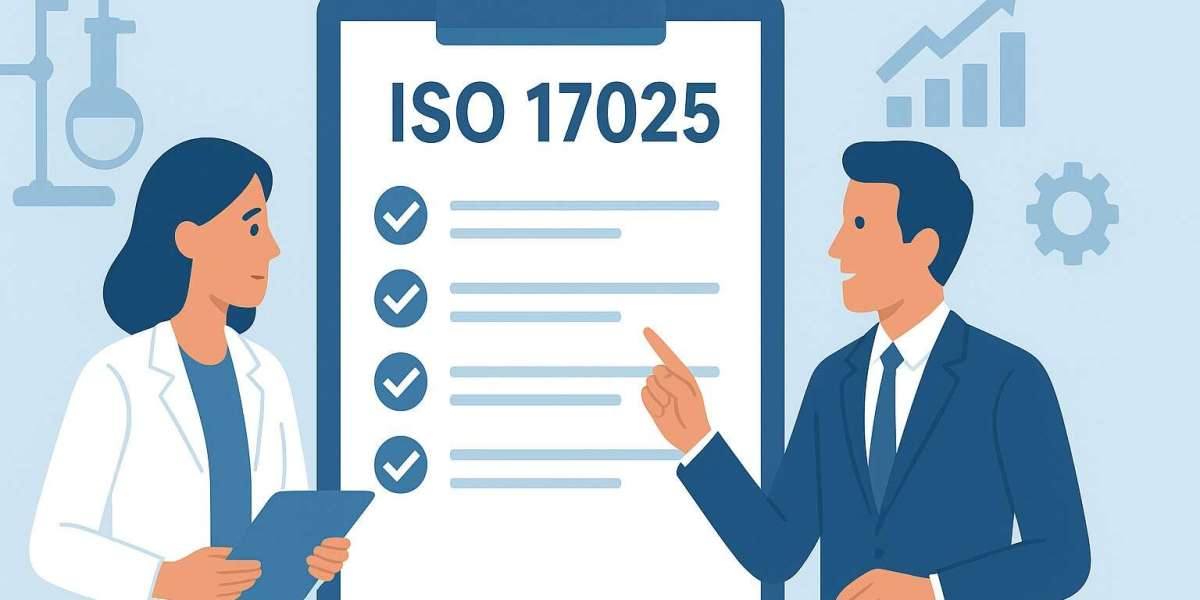Achieving ISO 17025 accreditation is one of the most important milestones for any testing or calibration laboratory. It signifies competence, reliability, and international recognition in laboratory operations. However, reaching this level of compliance requires a deep understanding of the standard’s framework — particularly the five core requirements of ISO 17025 accreditation. ISO 17025 Documents are at centre of this process, which form the backbone of laboratory quality management and technical operations.
In this article, we will explore the five core requirements of ISO 17025, their significance, and how properly maintained ISO 17025 Documents help laboratories meet each one effectively.
- General Requirements – Impartiality and Confidentiality
The first requirement of ISO 17025 focuses on impartiality and confidentiality. Laboratories must demonstrate that their operations are unbiased and free from any conflict of interest that could affect the validity of results. Additionally, client data and proprietary information must remain confidential.
ISO 17025 Documentation such as impartiality policies, confidentiality agreements, and declaration forms help ensure transparency. These documents serve as evidence that laboratory personnel understand and uphold these principles. They also outline procedures to identify risks to impartiality and methods to mitigate them, reinforcing trust between the laboratory and its clients.
- Structural Requirements – Defining Roles and Responsibilities
The second requirement addresses the organizational structure of the laboratory. ISO 17025 mandates that roles, responsibilities, and authorities must be clearly defined to ensure accountability and effective decision-making. The structure must support consistent performance of testing and calibration activities.
ISO 17025 Documents such as organizational charts, responsibility matrices, and job descriptions are vital here. They establish clear reporting lines and demonstrate how laboratory management supports quality practices. By documenting the laboratory’s structure, these records make it easier for accreditation bodies to verify that competent personnel manage technical and quality-related functions.
- Resource Requirements – Personnel, Equipment, and Environment
Resources form the third major requirement. This includes qualified personnel, suitable equipment, and controlled environmental conditions to perform reliable testing and calibration activities. Laboratories must ensure that staff are competent and that instruments are properly maintained, calibrated, and traceable to national or international standards.
Here again, ISO 17025 Documents play a critical role. Competence records, calibration certificates, maintenance logs, and environmental monitoring records all serve as proof of resource adequacy. By maintaining these documents, laboratories can show that they meet the technical prerequisites for generating valid and traceable results.
- Process Requirements – Operational Control and Method Validation
The fourth requirement canters on the core operational processes of the laboratory. This includes sampling, method validation, measurement uncertainty estimation, equipment handling, result reporting, and data management. Laboratories must ensure all processes are controlled, consistent, and traceable.
The relevant ISO 17025 Documents include standard operating procedures (SOPs), test methods, validation reports, uncertainty calculations, and test records. These documents ensure repeatability and reliability in every test performed. Proper documentation also enables laboratories to demonstrate compliance during audits and helps maintain quality even when personnel change.
Moreover, documented procedures support continual improvement by allowing regular review and revision based on feedback or new technical developments.
- Management System Requirements – Quality Assurance and Continuous Improvement
The final requirement emphasizes the management system, which underpins all laboratory operations. Laboratories can choose to establish a management system that aligns with ISO 9001 or follow the specific management clauses outlined in ISO 17025. This requirement focuses on internal audits, management reviews, corrective actions, and continual improvement.
Comprehensive ISO 17025 Documents—such as quality manuals, audit reports, corrective action logs, and management review minutes—demonstrate how the laboratory monitors and enhances its quality system. These records help ensure that any nonconformities are identified, addressed, and prevented from recurring. They also provide a structured approach to continual improvement, a key expectation of accreditation bodies.
The Central Role of ISO 17025 Documents in Accreditation
Across all five requirements, ISO 17025 Documents serve as the foundation for compliance. They act as tangible evidence that policies are implemented, processes are standardized, and results are reliable. Without proper documentation, even the most technically competent laboratory may struggle to demonstrate conformity during assessments.
Well-prepared ISO 17025 documentation ensures that every part of the laboratory’s system — from testing and calibration to management and communication — is traceable and transparent. In addition, standardized templates and document control procedures make updates easier when the standard or laboratory operations evolve.
Conclusion
Understanding the five core requirements of ISO 17025 accreditation helps laboratories establish a strong foundation for technical competence and quality assurance. From impartiality to management control, every requirement depends on well-maintained ISO 17025 Documents that reflect the laboratory’s commitment to excellence. By managing documentation effectively, laboratories can simplify the accreditation process, build client confidence, and achieve long-term operational success.



